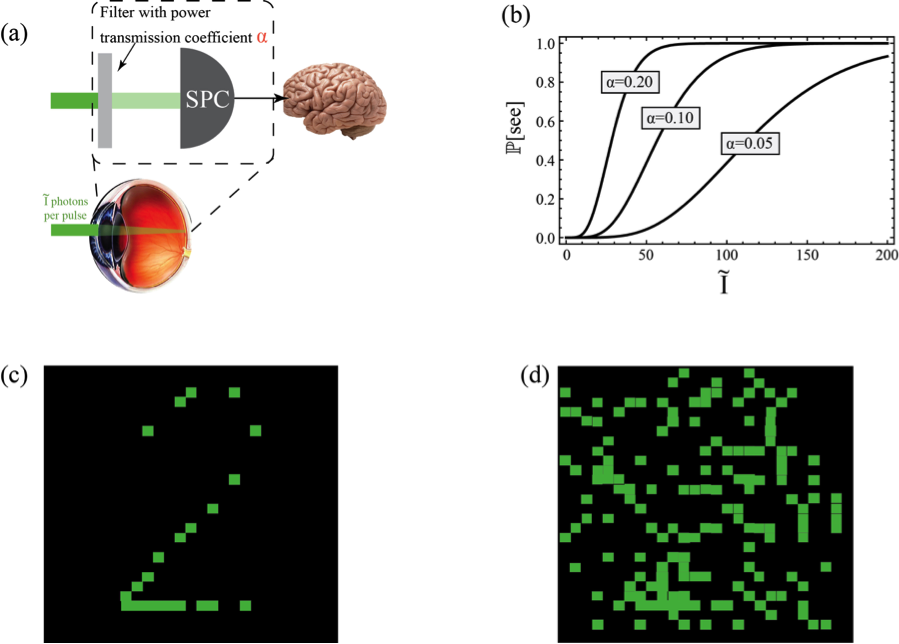Quantum Biometric Identification
|
Biometric identification, the measurement of human characteristics unique for each person, is a fast growing market of $5 billion and a growth rate of 20%. This is because security has recently become a major concern globally, with an ever growing demand for secure identification methods. Picture: (a) Schematic of the new biometric method, in which a weak pulse of light having Ĩ photons on average is incident on the eye. Along its path towards the retina the light suffers optical losses described by a parameter α, which is modeling the transmission coefficient of an optical filter. (b) The probability to see the flash of light as a function of Ĩ , for various values of the parameter α. This probability is based on Poisson statistics followed by the photon number of coherent radiation. (c) An identification algorithm is based on a selection and illumination of pixels on the retina having large α, so that they form a pattern recognizable to the user, and the simultaneous illumination of many low-α pixels. While the user will not perceive light in the latter, the impostor, even when equipped with an ideal photodetector, will see all pixels lighted, as in (d), and will not be able to discern any symbol. Article: “Quantum Biometrics with Retinal Photon Counting", M. Loulakis, G. Blatsios, C. S. Vrettou and I. K. Kominis, Physical Review Applied, 8, 044012 (2017). |
- Department of Physics
- Education
- Personnel
- Sections
- Excellence
- Research News
- Publications
- Contact
- Announcements
- Colloquia
- Conferences
- Skinakas Observatory
- Institute of Theoretical and Computational Physics
- Crete Center for Theoretical Physics - CCTP
- Crete Center for Quantum Complexity and Nanotechnology - CCQCN
- Onassis Lectures
- International Prizes
- International Relations
- Computing Services
- Useful Links
- Visitor Information

